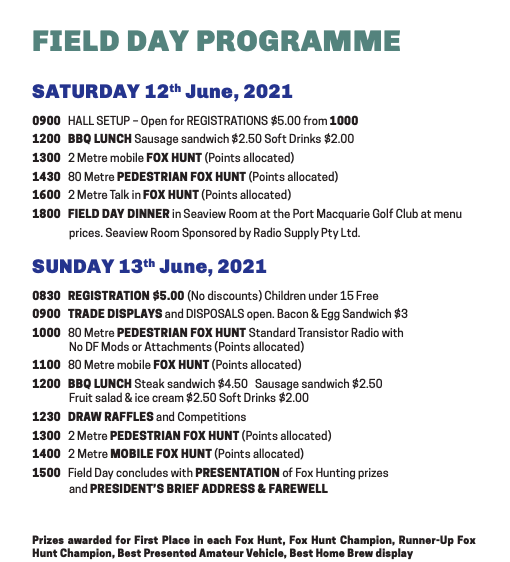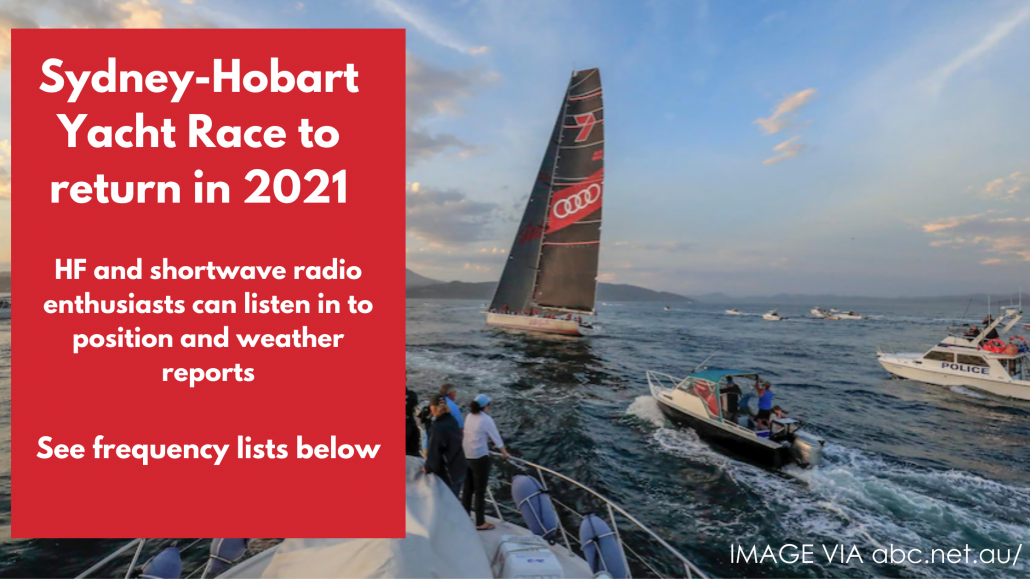
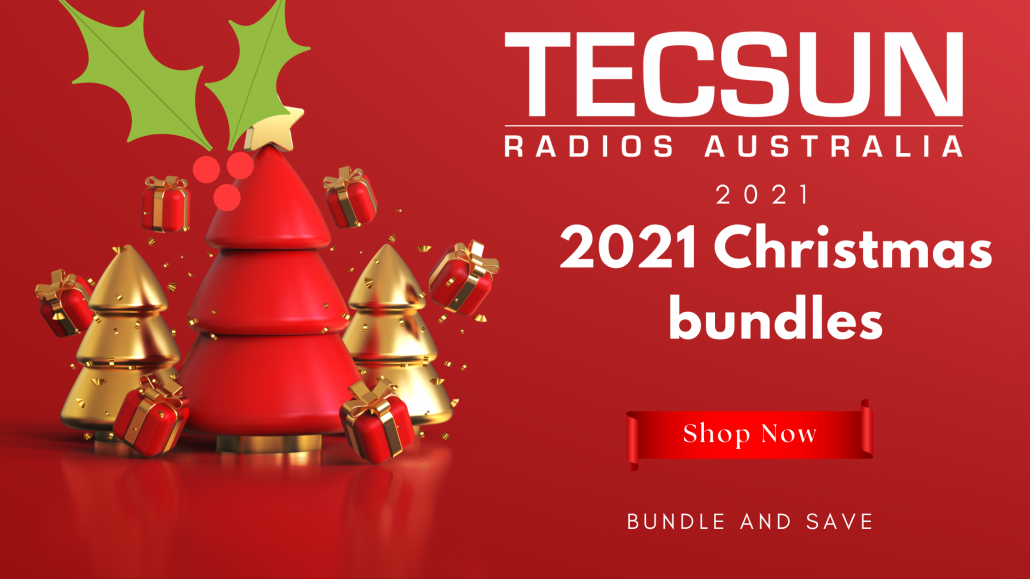 Yes, it is the season of giving! With holidays coming up it is also the time for exploring your hobbies and creating your own space to do more of the things you enjoy
Yes, it is the season of giving! With holidays coming up it is also the time for exploring your hobbies and creating your own space to do more of the things you enjoy
If this year has taught us anything, making sure your home is as comfortable as possible is paramount.
If you have dabbled in shortwave in the past and enjoyed it, perhaps now is the time to invest in this fantastic hobby and expand your horizons!!
We have created some fantastic bundle packs that are not only great as a gift idea but are also great suggestions to set yourself up for the years ahead with some awesome radio listening!! Receive huge discounts when you buy these products at the same time, simply add items to the cart and use the above code at checkout to get your discount!Welcome to the world of internet radio.

Internet Radio listening pack.Already a shortwave enthusiast but want to optimise your shortwave listening to world wide online stations too? This is the perfect pack featuring our stylish Apogee internet radio used in combination with our HiFi communication headphones for comfort and clarity! Simply connect to your existing internet service. You can turn up the music and not bother anyone else in your home!
Deal price $305 Normally $345
Travellers Companion Pack
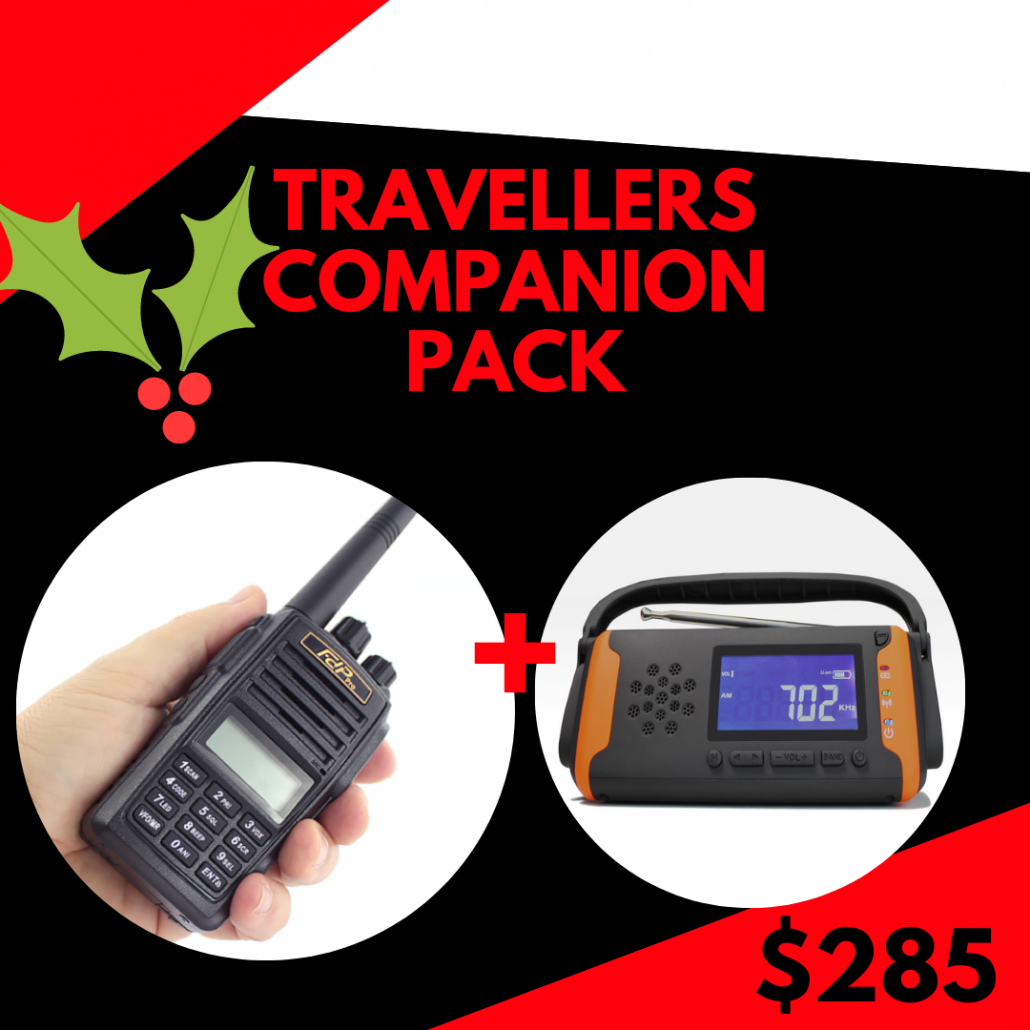
The FDPRO is perfect for travelling. Keep in touch with others in your immediate area, buy two units and keep in touch with the kids. Ideal for car to car communications, yet with the flexibility to keep in your grab bag in case of emergencies. Keep in touch over the CB band when you are on the go.
Accompany this with an Emergency radio that contains USB charger, emergency alarm and flashlight and you are set for the road and prepared for anything.
The perfect gift for people who may be about to hit the road travelling around Australia, those who live in rural areas or people who love to go camping and get out and about in nature.
Deal price $285, normally $305The DRM Pack
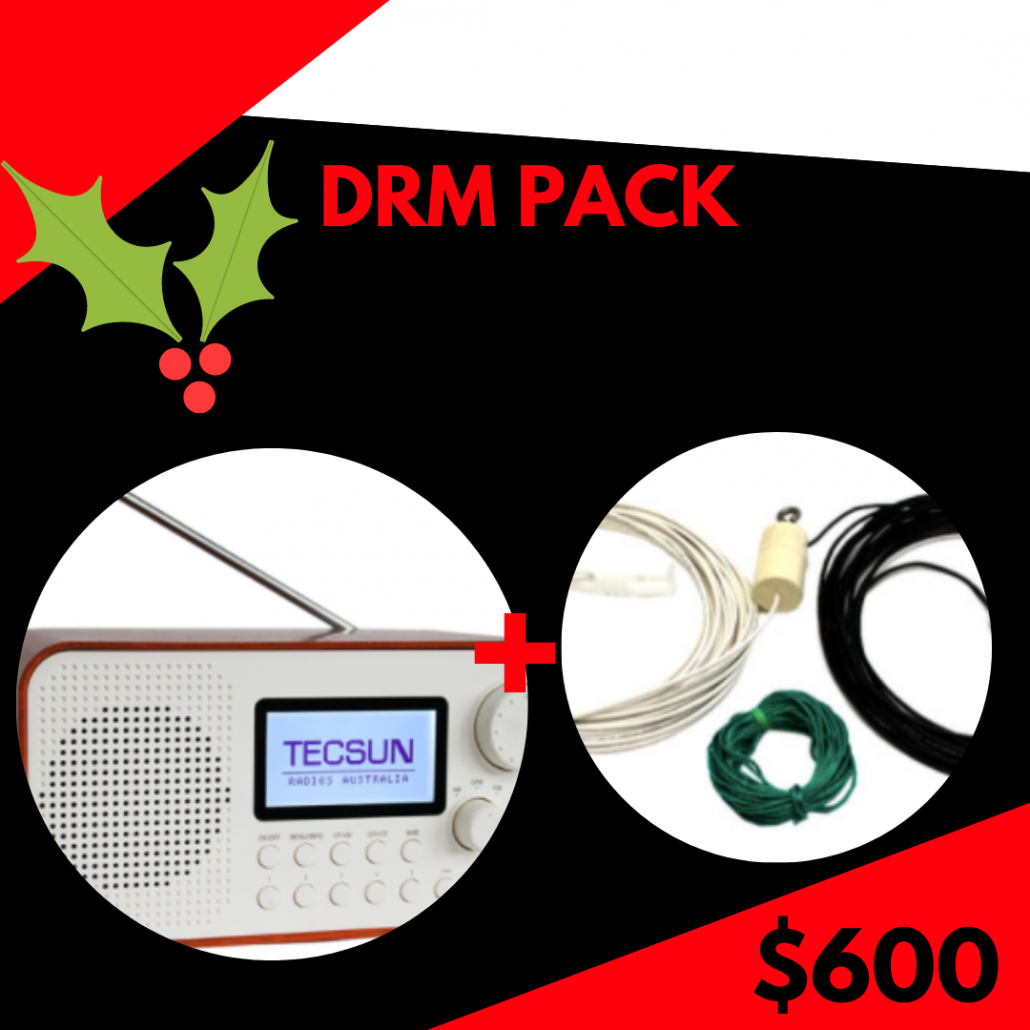
This fantastic pack broadens your listening to the digital radio world allowing you to both listen to shortwave and receive and decode DRM Shortwave Radio signals
Finally, a stand-alone Digital Radio Mondiale (DRM) Shortwave Radio has arrived and is available for DRM and shortwave radio enthusiasts to add to their collection.
The TRA Q-3061 DRM Shortwave Radio has been a long time coming and after evaluating dozens of samples over the years we have finally found a stand-alone desktop DRM radio that is suitable for Australian, New Zealand, and Pacific Islands listeners.
The TRA Q-3061 DRM Shortwave Radio is primarily designed to receive and decode DRM Shortwave Radio signals but the radio can also be used to receive traditional Shortwave (AM) broadcasts, FM, and AM (MW) broadcasts. The Tecsun Radios Australia Q-3061 DRM Shortwave Radio receives DRM, FM, and Shortwave (AW) signals via the inbuilt telescopic antenna, or for superior reception, the radio provides two dedicated external antenna BNC connections for DRM, Shortwave (AM), FM, and AM (MW) signals. On the FM band, this receiver also decodes RDS where broadcast. In slow tuning mode, the frequency step is reduced to 1 kHz. This is an advantage when tuning the extended MW band (530-1710 kHz) to receive specialised broadcasters in Australia.
The TRA Q-3061 DRM Shortwave Radio is for experienced shortwave users. There is a limited number of DRM signals available in our region although the total number of DRM broadcasts are increasing. This radio is squarely aimed at radio enthusiasts and DXers, most signals require an external antenna, experience, and patience.Included in this pack is the reception boosting Tecsun Shortwave and AM Outdoor Antenna which significantly enhances the reception of signals in the medium wave (AM) and shortwave antenna bands covering 0.5-30 MHz. The Tecsun Shortwave and AM Outdoor Antenna is based on a long wire antenna design but provides significantly improved reception over a long wire because the Tecsun Shortwave and AM Outdoor Antenna utilises a matching transformer that acts as a balun with a ratio of 10:1.
This pack is $600, normally $640Complete Hobby Radio Shack Pack.
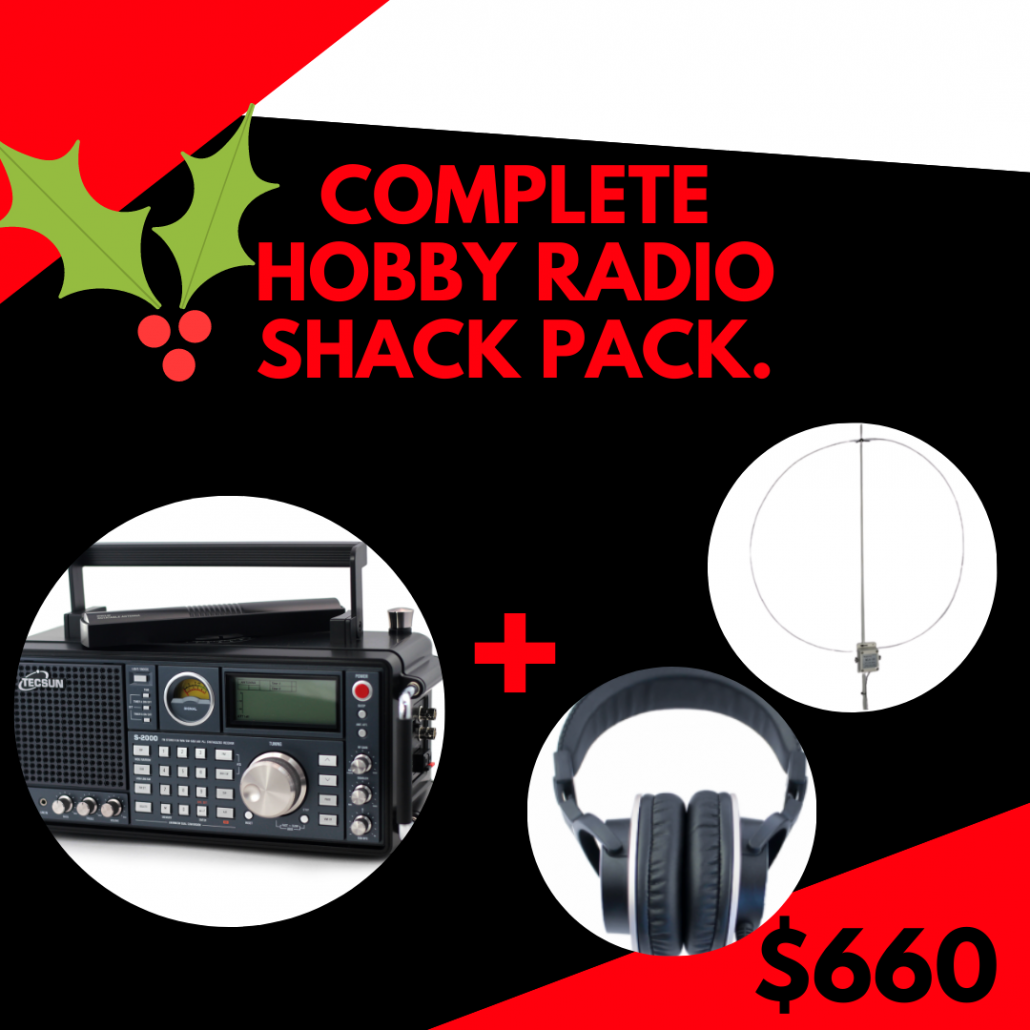
Receive huge discounts when you buy these products at the same time, simply add items to the cart and use the above code at checkout to get your discount!Go on, you deserve it. You have worked hard your whole life and now is the time you can dedicate to exploring the fantastic hobby that is shortwave. Beyond a man cave, a radio shack is a place you go to tinker, to tune and to uncover some of the world’s mysteries within one of the oldest hobbies around!!To complete your radio shack we recommend the following bundleThe S2000, a quality desktop radio that not only looks the part with its classic styling it also will enable you to tune in to SW, MW, AM and FM to follow your favourite stations and perhaps happen across a new broadcast you have ever heard before!Included in this bundle is the MLA-30+ Shortwave Loop Antenna that can be mounted indoors to boost the performance of your Shortwave radio and increase the number of radio stations and broadcasts that can be received.Once you have found your favourite stations simply program them into your S2000 and add your final accessory for the best and most comfortable listening possible. A pair of Tecsun hifi communication headphones. and add your final accessory for the best listening possible. Some Tecsun hifi communication headphones.Bundle and save, deal price $660, normally $710 when all 3 purchased together in one checkout.For those serious about Ham Radio
The New Ham
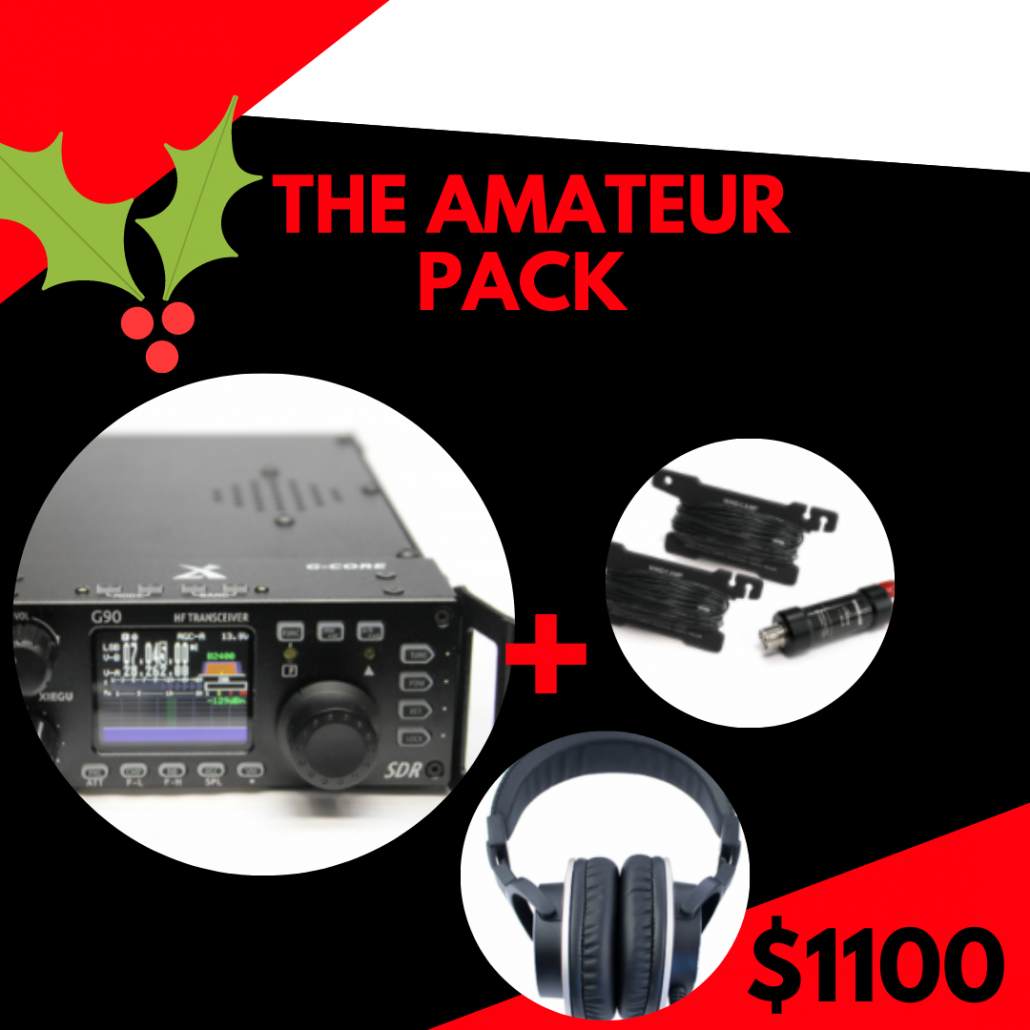
This pack contains everything you need to listen to shortwave radio.
Xiegu G90 + Antenna +Headphones Only $1100, normally $1167The star of this pack is the Xiegu G90, truly a world class radio transceiver. The XIEGU G90 HF Transceiver is a High-Performance Portable Amateur Radio Transceiver. This powerful portable HF multimode transceiver covers 0.5-30MHz (10-160 metres on TX) with 20 watts of RF output. The XIEGU G90 HF Transceiver utilises a software-defined (SDR) 24-bit architecture to provide superb transmit and receive performance.Use the supplied separation cable to mount the control head where you can see it and the transceiver out of the way, to maximise operating room in your radio shack.Improve your reception with The TRA HF Portable Dipole antenna is rated at 100 Watts PEP power handling capability. Featuring 10 metres of Rg58 cable for easy connection to most transceivers.Note: Best results will be obtained when the antenna is at least 4 metres above ground. In theory, the antenna should be at least a quarter wavelength above the ground for best results, so the height will correspond to the operating band. Generally, higher is better.Your final accessory in this pack is for the best and most comfortable listening possible in your radio shack. A pair of Tecsun hifi communication headphones. With memory foam ear covers and an extra-long cord to reach your radios.Bundle price $1100, normally $1167
OFFER VALID TILL MIDNIGHT DEC 24.
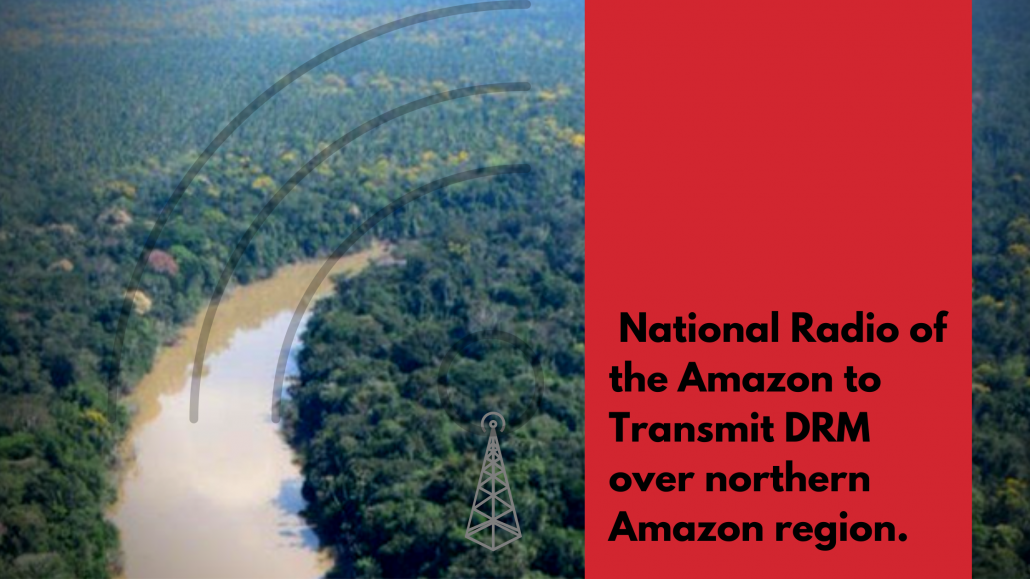
The People of the Amazon will soon be covered by DRM shortwave as National Radio of the Amazon orders a 100 kW BT transmitter
The vast area of the Amazon known as the Amazon Rainforest is the largest tropical ecosystem in the world, with rainforest covering roughly 40% of South America, stretching over ten countries in South America, and is almost as large as the United States! The rainforest is home to both large and small communities in very remote areas, some harvesting crops along the rivers and others in more secluded villages deep within the forests.
As you can imagine communication to these areas can be difficult so it was no surprise when at the end of last year, testing of DRM technology began using a transmitter of 2.5 kW with the digital power of just 1 kW.
Despite this low power of the transmitter supplied by BT Transmitters, recordings were reported from different regions of the country and even from North America and Europe.
As a result of these tests, the National Radio of the Amazon decided to use DRM shortwave transmissions to serve indigenous populations in the northern Amazon region.
At the sizable cost of $650,000 USD. Public broadcaster Empresa Brasil de Comunicação (EBC) ordered a 100 kW BT transmitter to broadcast in DRM at 11,780 kHz in the 25-meter band, an existing shortwave channel used by Rádio Nacional da Amazônia.
This is considered to be the first domestic DRM installation on a locally produced transmitter in Latin America.
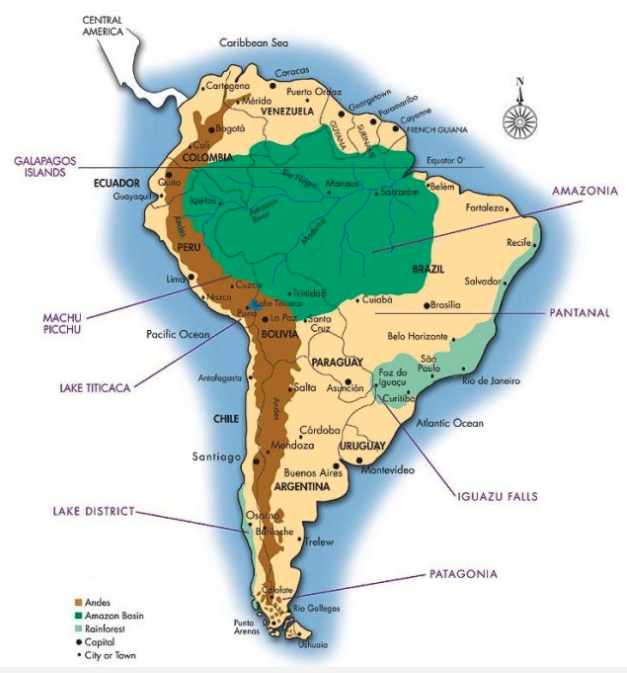
Information from The Digital Radio Mondiale Consortium.
Image via https://amazonaid.org/
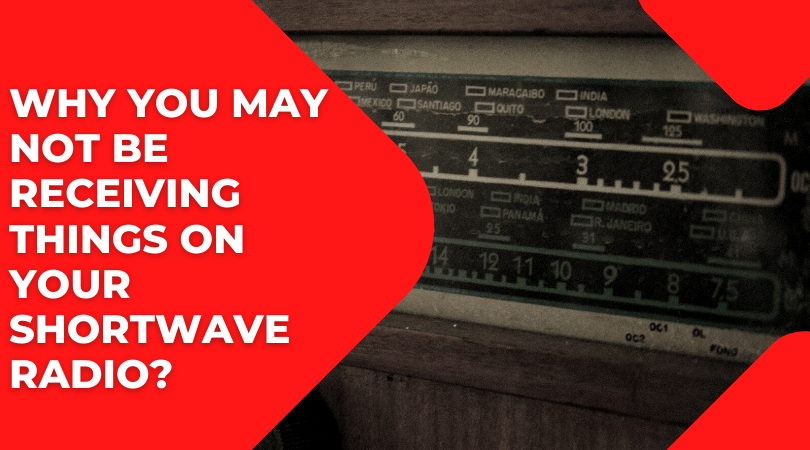
You just got your new radio. You excitedly unbox it and put in your Tecsun batteries, you turn it on, and there’s the sweet sound of….. Silence 🙁
What could be wrong? Is my radio broken?
Chances are it is not broken, here are several things it may be.
The first one may be noise, yes noise! Unfortunately, every single electrical item in your home emits a frequency, particularly modern items, especially if you live in a densely populated area. There may simply be too much noise dominating your area.
If you have a portable radio you could try troubleshooting it yourself. Simply walk around the home to find where you receive a signal and also where it is being interfered with. We had one customer just the other week who did this and realised the light dimmers were creating interference, light dimmers!! Sometimes it’s the microwave, sometimes it’s a power outlet. Radio signals cannot penetrate the metal walls of your shed, nor the foil-lined roof of your house! Taking the radio outdoors to try and receive a signal is one way of eliminating the effects of interference. If this is successful, the next step is to investigate an external antenna.
The Tecsun Outdoor Shortwave and Medium Wave Antenna is one solution. This gets the receiving ‘element” further away from the noise source, it is then matched to the transmission line and the radio is then fed with a coaxial cable. Compared to a straight piece of wire of the same length, this antenna offers a huge improvement in received signal level. If you do not have room for an external antenna, an “active loop” antenna might be your solution. These can be erected on a balcony or even fixed tothe glass of a window.
Another reason you may not be receiving shortwave is the time of day. Unless the specific broadcast is aimed at Australia, most international shortwave broadcasts will occur during daylight hours for the listening audience. So depending on the broadcaster, this might be in the middle of the night for us shortwave enthusiasts. Check some of the available shortwave radio schedules on the internet to see who is broadcasting when you are listening. In Australia, at this time of year there are many shortwave stations operating around 9Mhz most mornings, by mid-afternoon, many have shifted to 13-18Mhz for the evening.
Time signals are one reliable signal source. They are on air constantly 24 hours a day. Their signals on 10.00Mhz and 15.00Mhz are easiest to hear, and this will confirm the correct operation of your receiver. These signals are also ideal for comparing reception results between antennas. It is also possible to check the signal of a shortwave broadcaster using the Tecsun Radios online SDR. Click here for access.
Perhaps during the time you are tuning there is a geomagnetic storm or a solar flare that may be causing a temporary weakened signal.
It may be that a setting on your radio needs changing. Many radios have a button for “local or DX”. If your switch is on local it may not receive weaker stations.
Experiencing issues setting up your shortwave radio ? Garry at Tecsun Radios Australia is here to help guide you through the troubleshooting process if needed.
It is all part of why we are different here at Tecsun Radios Australia.
In fact with every radio purchase from Tecsun Radios Australia, you receive a listeners guide which includes a very comprehensive and practical guide to locating sources of AM and HF interference! You can view this guide here
The main thing to remember is dont give up ! Shortwave listening is like fishing, you never know what you are going to catch! Equipping yourself with a good receiver and antenna, are the first steps towards being able to regularly enjoy shortwave listening, the only live and uncensored source of international news and events.
One of our most popular portable shortwave radios is the Tecsun PL880. It comes in both the original and the deluxe edition with a stylish and durable hard case to keep your radio safe, shockproof, and moisture-free in storage or whilst traveling.
The top features of the PL880 are digital signal processing on the HF band (in all modes), a quantum leap forward for the reception of weak signals. In addition, the Tecsun PL880 Radio offers 9 user-selectable IF bandwidth settings for communications enthusiasts, and a new long-life lithium-ion battery.
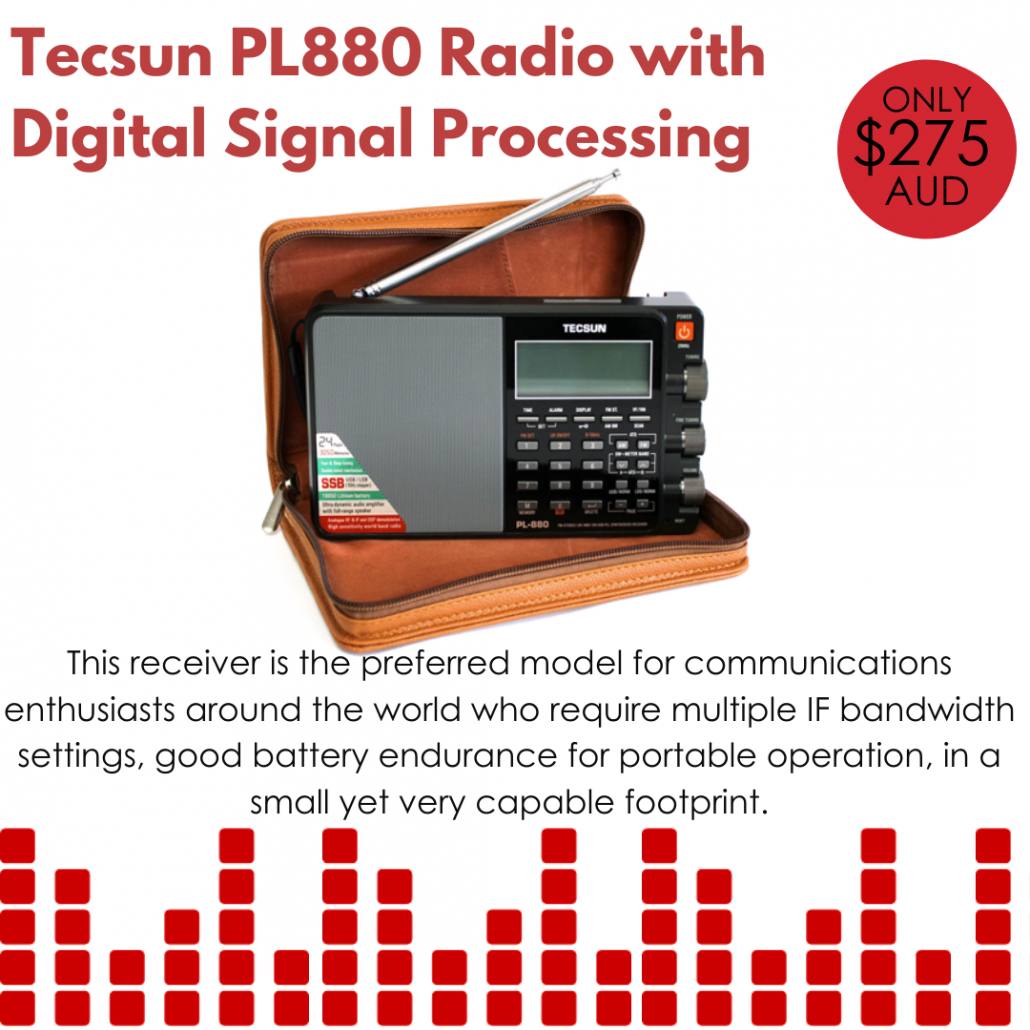
The receiver covers the entire shortwave range (100-29999KHz), Longwave, FM and AM broadcast bands. Receiver sensitivity on HF in the SSB mode is typically less than 1uV. Upper Side Band and Lower Side Band are individually selectable, and there are multiple user-selectable bandwidth settings available for each band.* The receiver is equipped with an external antenna socket to allow connection of an external antenna for the Shortwave bands for enhanced reception.
Speaking of External antennas. To improve your reception we highly recommend the Tecsun shortwave and AM outdoor antenna.
The Tecsun Shortwave and AM Outdoor Antenna significantly enhances the reception of signals in the medium wave (AM) and shortwave antenna bands covering 0.5-30 MHz. The Tecsun Shortwave and AM Outdoor Antenna is based on a 10 metre longwire antenna design but provides significantly improved reception over a basic longwire because it utilises a matching transformer that acts as a balun with a ratio of 9:1. This provides an optimal match between the 500 ohm impedance of the antenna and the 50 ohm impedance of the receiver, greatly increasing the amount of signal provided to the tuner.
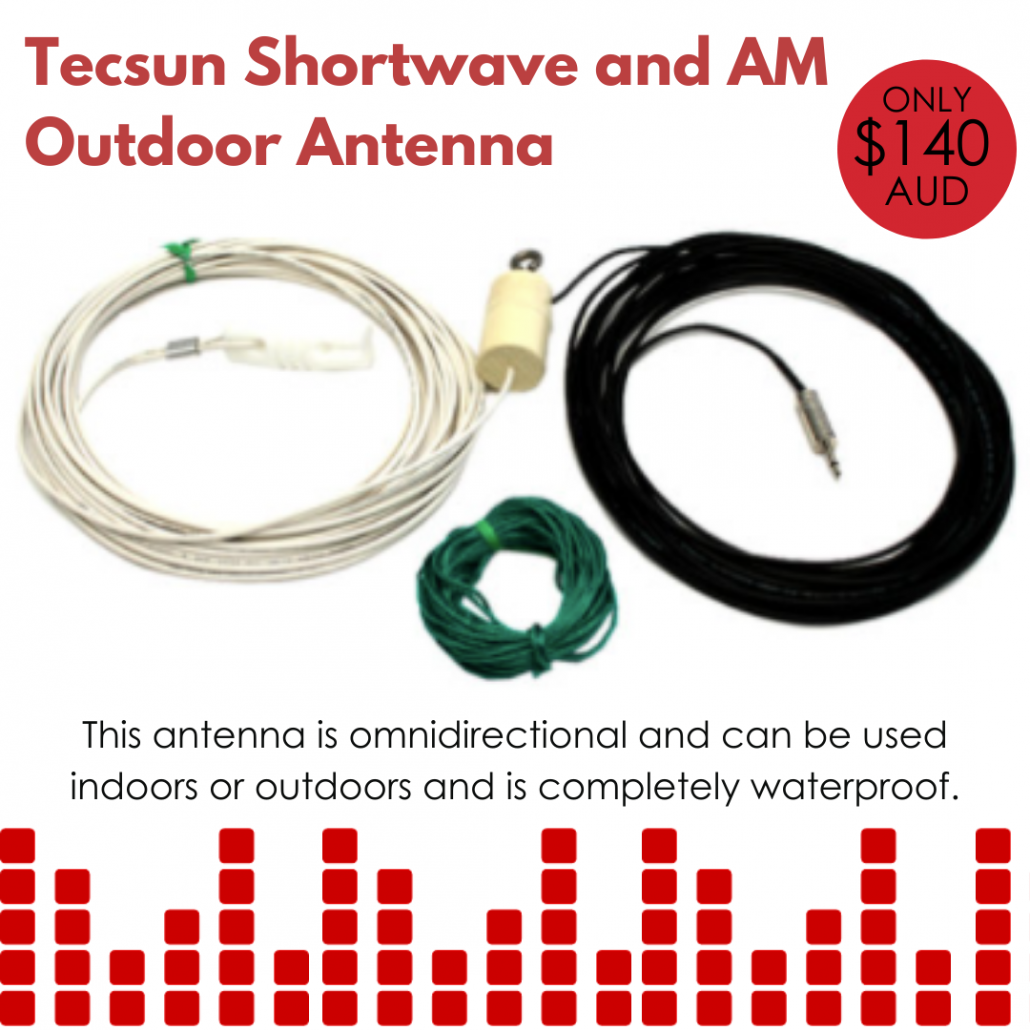
The MLA-30+ The MLA-30+ Shortwave Loop Antenna is an affordable active loop antenna that allows people without the luxury of a large backyard, to use an external antenna to boost the performance of their Shortwave Radio radio and increase the number of radio stations and broadcasts that can be received. The MLA-30+ Shortwave Loop Antenna can be mounted indoors on any non-conductive rod or tube, such as PVC conduit or fibreglass rod (not metal). The loop element of the MLA-30+ Shortwave Loop Antenna has a diameter of 60cm and is connected to the active amplifier housing by two stainless steel wing nuts. For portable operation, the MLA-30+ Shortwave Loop Antenna can be powered by a standard USB powerbank.
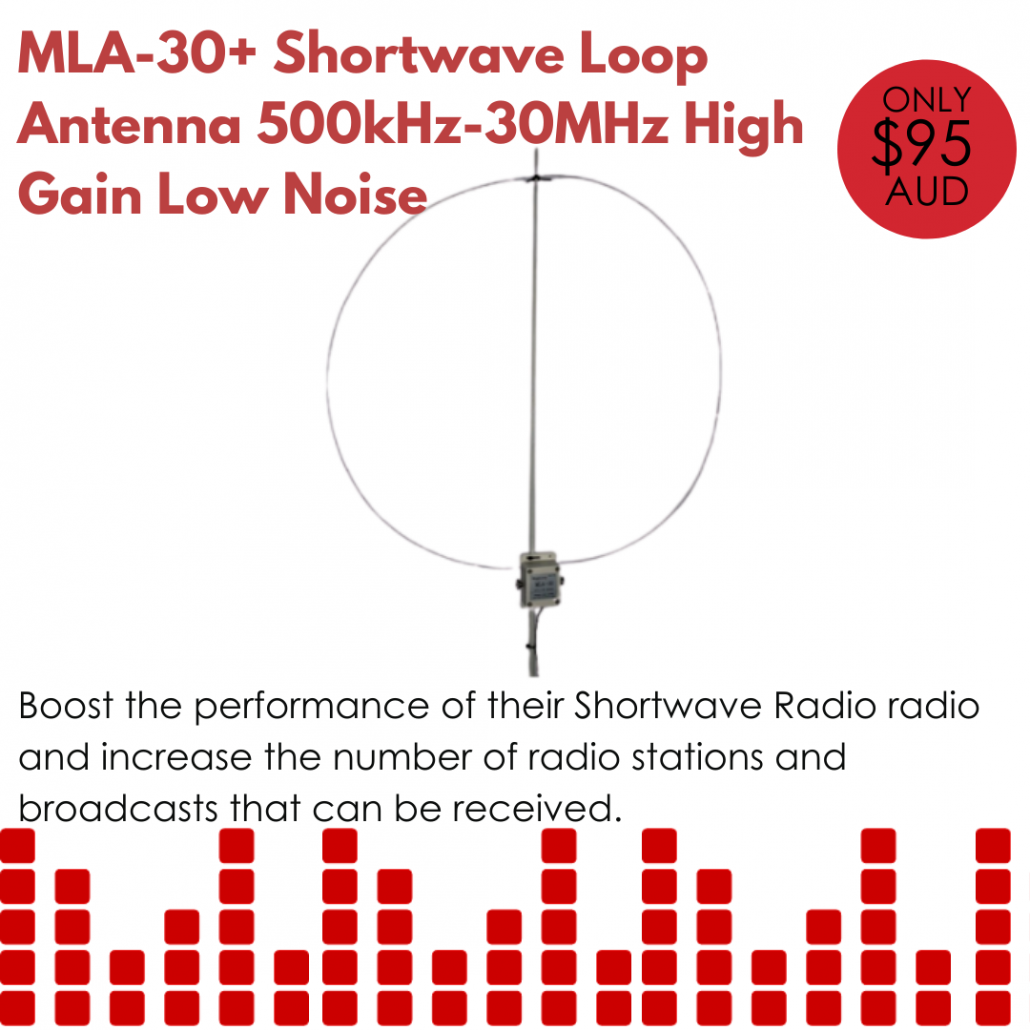
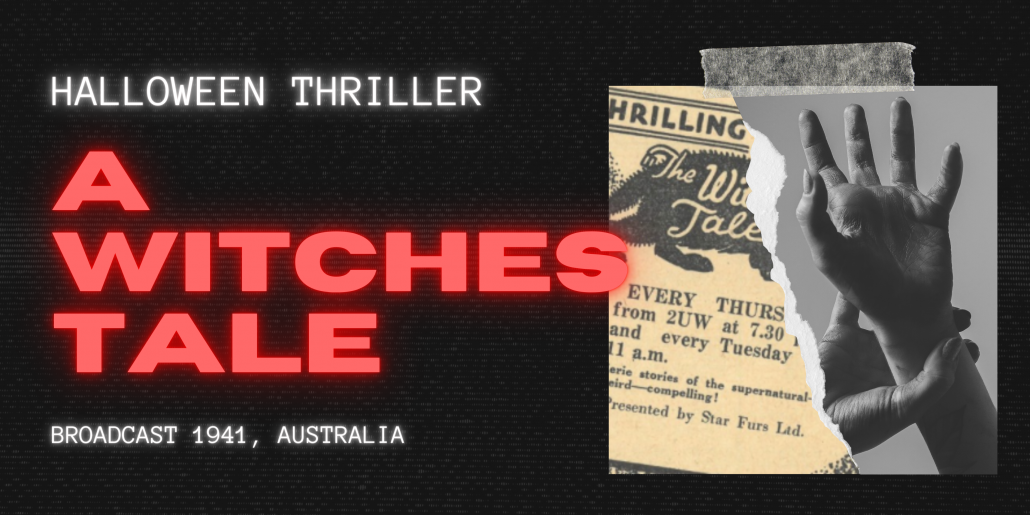 Picture this, a family huddled around the radio on Halloween, the sun is going down and a spooky story unfolds, everybody listens intently, imagination is working overtime, a bell chimes, there is a scream….
Picture this, a family huddled around the radio on Halloween, the sun is going down and a spooky story unfolds, everybody listens intently, imagination is working overtime, a bell chimes, there is a scream….
Before television, radio was the entertainment of choice in homes across Australia. During the 20th century, radio broadcasts varied greatly, with something for everyone including music shows, talks on politics, gardening and various topics, sporting event coverage, news, and of course serial dramas!
One of the most popular genres broadcast was serial thrillers! Not too dissimilar to many of the thriller podcasts that are popular today. Instead of reading a book one could go about what they were doing while being entertained by this gripping episode broadcast across the airwaves.
Having gained huge popularity in the USA, many thriller scripts were sent over to Australia and adapted locally, featuring well known Australian actors of the time like Ruth Cracknell
On “All Hallows Eve” 1941 A witch’s Tale was broadcast to Australian audiences.
A witches Tale was written especially as a Halloween broadcast and adapted for Australian radio.
The original American series of The Witch’s Tale was significant as the earliest horror program produced for radio. It was first heard in May 1931 out of radio station WOR in New York City.
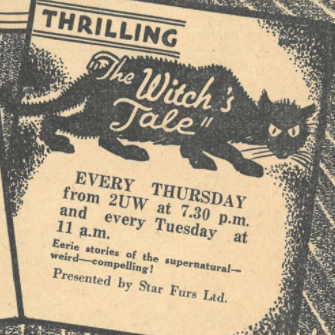
The opening sets the tone of the episode, with the chiming of a bell, an eerie voice informing you that you will hear tales from Nancy the witch of Salem and her cat Satan accompanied by sinister music and sound effects.
The Brisbane Telegraph described the program in 1947 as ‘not the sort of radio program the timid would enjoy listening to when alone in the house after nightfall.
In fact, Newspapers began to receive letters from outraged listeners protesting the broadcasts of such horror and the damaging effect it had on young people.
‘Do parents realise the serious damage that may be done to the minds of their children by the horror story of the radio? One serial broadcast from a local station between 6 and 7pm for children could cause untold mischief to many an innocent child … This mental cruelty is worse than punching a child in the face’ – CT Turnbull, Assistant Secretary of the Newcastle Young Men’s Christian Association, Newcastle Morning Herald, 6 June 1941.
Since we are so close to Halloween, want to hear that very tale from 1941 yourself? You are in luck!!
The National Film and Sound Archive of Australia have provided some Samples of these thriller podcasts/ Click here to listen to A Witches Tale broadcast in 1941 (program duration 26 minutes).
Information courtesy of the NFSA.
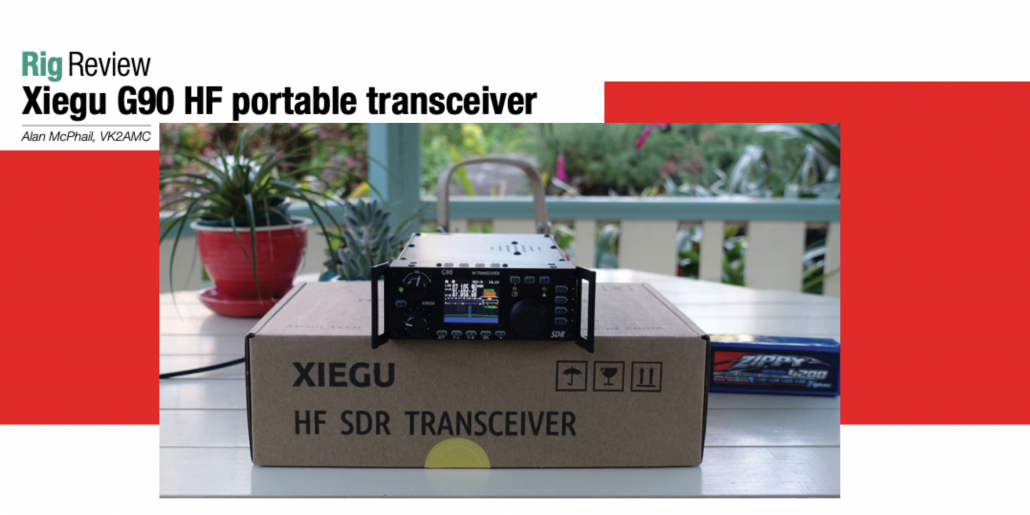
Xiegu G90 HF portable transceiver by Alan McPhail, VK2AMC
We were delighted to receive this fantastic “Rig Review” from fellow radio enthusiast Alan McPhail. His story starts below!!
In 1951, as a four-year-old, I first became aware of amateur radio. My father had been transferred to Townsville by the Department of Civil Aviation and, while sitting in the rear of my parents 1934 Continental Beacon, I saw an HF quad antenna mounted on a tower.
My father explained to me that the antenna was at the home of a radio amateur and it allowed him to talk with people around Australia and the world by radio. This was the beginning of my interest in amateur radio. I have been licensed since 1978, but because of an interesting career, I did not become active on the bands until 2011 and then only occasionally.
After a lightning strike at home in 2015 along with the subsequent fire that burnt through the roof space, the house was severely damaged, contents written off and I lost most of my equipment.
The rebuild of the house took 13 months to complete and the subsequent time to resettle limited my amateur radio pursuits. Our home is on a corner block and the backyard garden is unsuitable for setting up a permanent antenna. I have experimented with dipoles but most often I used a home-built Buddistick antenna (www.buddipole.com).
When I was asked to review the G90 I was reticent to accept the task, not because of my extensive electrical and communications engineering background but because I did not have enough experience as an operator on the amateur bands. I note that in-depth reviews have been done by the RSGB, the ARRL, and on YouTube. The G90 has an active and supportive user group. It was suggested that I should share my user experience of the G90 for Amateur Radio readers.
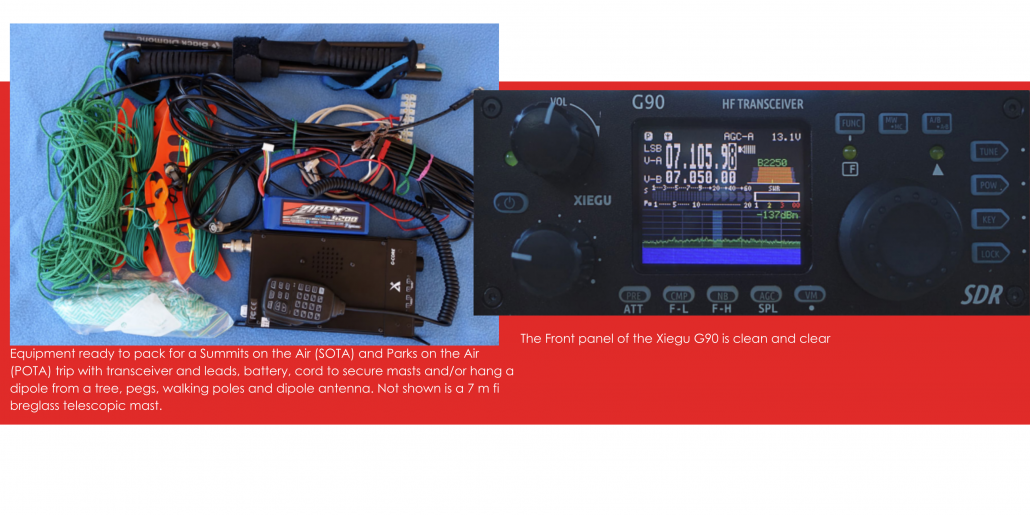
I needed to do some preparatory work to power the G90 and choose an antenna. I fitted Anderson Powerpole connectors to my 4200 mAh LiFePo4 battery and to the battery end of the G90 power cable. I connected the G90 to the battery and a short inside wire antenna. This was sufficient to check that the G90 was working on receive and to become familiar with the basic controls. Initially, I tuned to the ABC frequencies in the broadcast band and experimented with the filter control width and position. The operation manual was easy to follow, and others have improved versions available. Initial observations The colour display is approximately 4.5 cm (1.8”), but it displays a large amount of information very effectively, making the front panel appear larger than it is. On the air Every Friday between 09:00 and 10:00 hours, the Hornsby and District Amateur Radio Club (HADARC) conducts a 40 m net on 7.106 MHz. I thought this would be an ideal occasion to test the G90 on-air. I used a 10 metre length of coaxial cable to connect the transceiver to the antenna. My home-built Buddistick antenna was assembled and slid into the lower three sections of a 7 m-tall telescopic fiberglass mast, increasing the overall height of the antenna by 2.9 m. After installing the antenna counterpoise, I switched on the power to the G90 and tuned to a vacant frequency on 40 m, switched to the AM mode, and pressed the transmit key. The SWR was very high and I checked the antenna connections. Normally, I would adjust the counterpoise length to try to reduce the SWR. However, as I had read good reports about the auto tuner, I decided to activate it.
After a few clicks of changing relays, the SWR dropped to 1:1 and I tuned to the net frequency and joined the net. I spent an hour with the group whose reports on my signal were very encouraging. I could hear most of the participants and received “5 and 9” from several of the participants. Being able to join the group net so quickly on the fi rst setup is a demonstration of how easy the G90 is to operate. The 20 W power output also helped in successfully communicating with more participants than I have previously achieved with my 5 W transceiver. Being able to see the power supply voltage on the display was useful in monitoring my new battery. When switched off, the G90 saves the frequency and mode settings as the start-up values for the next time the rig is turned on. I joined the HADARC Net on a second occasion and I found the controls to be tactile and the panel layout convenient. The receiver audio was of good quality while the ±24 kHz bandwidth spectrum display and SWR scanner were very useful and easy-to-use features. A feature for the hearing impaired in CW mode is the yellow LED that indicates when a signal is being received if there is good reception. The controls There are four pushbutton switches on the top horizontal portion of the front panel, a pair to step up or down the bands, and a pair to cycle through the modes: LSB, USB, CW, CWR and AM. The three front-panel knobs are: • Volume control; a short press will toggle to and from the headphones; • Multi-function Adjustment default steps at 100 kHz and a short press enters the receive mode filter allowing adjustment of the bandwidth and position of the filter. The default operation of the knob can be changed with a long press to change other parameters;
In summary:
The Xiegu G90 is a capable HF QRP transceiver that has easy-to-use – controls with an information-rich colour display. The 20 W output power, adjustable from 1 W, would be appealing to QRP and DX operators, particularly for SOTA and POTA. The standing wave scanner and automatic antenna tuner would also be useful in the field. Above all, I found the Xiegu G90 HF Transceiver was fun to operate.
Read the full article which includes additional tips, information, and even information about the Xiegu G90s portability, click here
The team here at Tecsun Radios Australia are serious about amateur radio and have found the G90 to be fantastic value for a receiver with this power and capabilities on the market.
Thank you the Wireless Institute of Australia for this information.
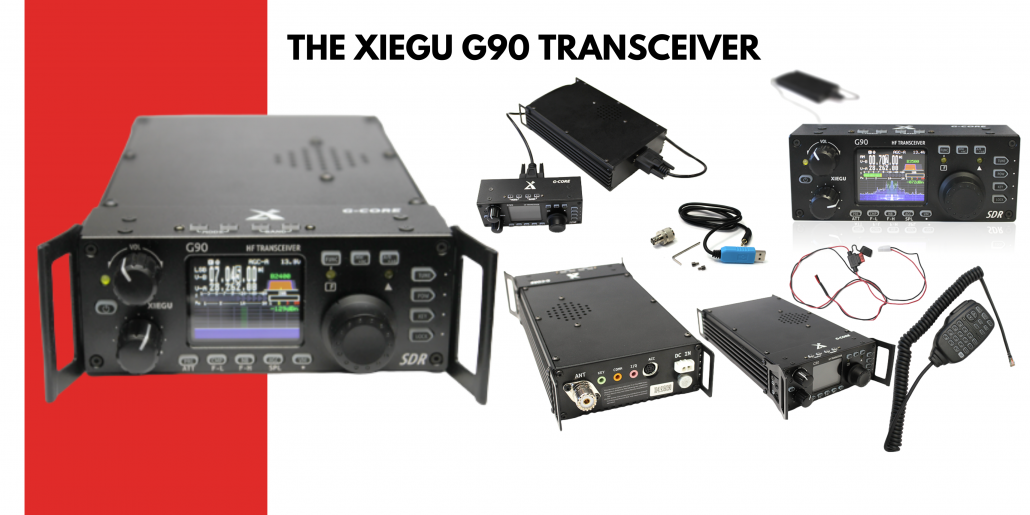
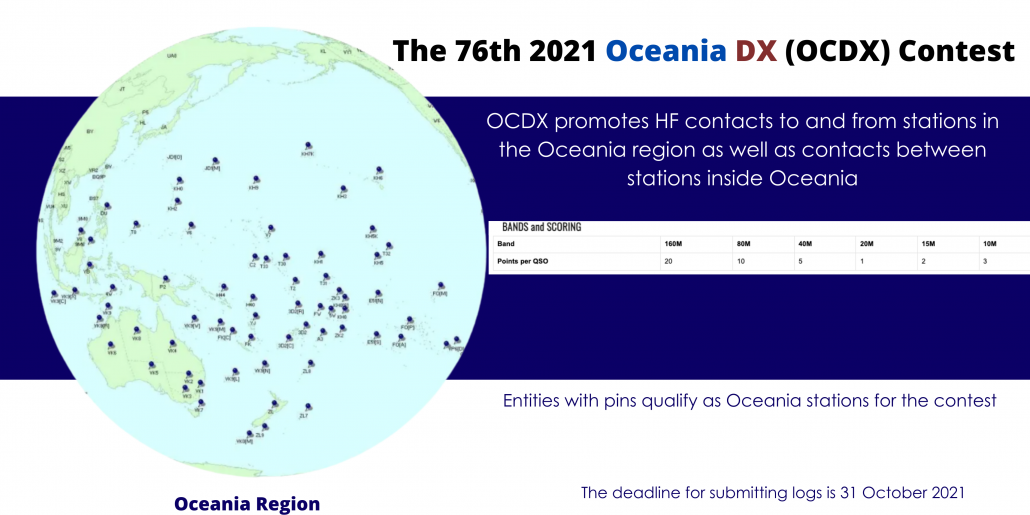
What is the contest?
Every year a contest is held that promotes HF contacts to and from amateur radio stations in the Oceana region as well as contacts between stations inside Oceania. Points are allocated for each contact depending upon the location. There is no penalty for working non-Oceania stations but contacts between non-Oceania stations will score no points or multiplier credits. Each contact or QSO is credited with twenty points on 160M; ten points on 80M; five points on 40M; one point on 20M; two points on 15M; and three points on 10M. Note that the same station may only be counted once on each band for contact points.
The aim is for Oceania entrants to contact as many stations as possible, anywhere in the world !! In 2020 over 1600 stations participated.
Oceania shortwave listeners should try to log as many stations as possible both inside and outside Oceania.
When is it on?
This year there are two separate contests held a week apart. The phone contest will be held on Saturday October 2nd from 06:00 UTC to Sunday, October 3rd 06:00 UTC . The CW contest will be held on Saturday 9 October from 06:00 UTC to Sunday 10 October 06:00 UTC.
Enter one contest or both! See summarised notes provided by the contest holders.
For a clearer map of Oceania click here
SPECIAL NOTES FOR THE 2021 CONTEST
- A reminder that the Phone and CW sections each start at 06:00 on Saturday and end at 06:00 on Sunday.
- The deadline for submitting logs is 31 October 2021.
- Entrants are reminded of the need to observe any COVID related restrictions (e.g. social distancing and travel constraints) that may be in place for the contest dates.
- Electronic logs are to be submitted using the form at https://ocdx.contesting.com/submitlog.php. Please contact the Contest Committee at info@oceaniadxcontest.com if you are encountering difficulty in submitting your log.
- Electronic logs are to be in Cabrillo format which is generated by all popular contest logging software programs. Alternatively, entrants can use the forms at http://www.b4h.net/cabforms.
- Only one entry may be submitted by each operator or team of operators (Rule 6a).
- If the station worked does not provide a serial number for the Oceania DX Contest, then log the received number as 001. See Rule 8.
- A reminder that logs from Single Band entrants must record all contacts made during the contest period, even if on other bands. Only contacts made on the band specified in the Cabrillo header or summary sheet will be used for scoring purposes.
- Indonesia entrants are reminded that the Indonesia amateur radio regulations do not permit the YH club prefix to be used in the OCDX and other national or international amateur radio contests. Only the 7A, &I, 8A or 8I club prefixes may be used for this purpose.
- All entrants are reminded that UTC must be used for recording the date and time of each QSO and that care must be taken to ensure the times are recorded correctly.

The Phone and CW contests are scored separately.
Prefixes are multipliers (e.g. N8, W8, WD8, HG1, HG19, KC2, OE2, OE25, LY1000, VK2 …) on each band on which you work them.
-
- For multiplier purposes, prefixes and callsigns without numbers are notionally assigned a zero e.g. PA/N8BJQ counts as PA0, and XE/KT5W counts as XE0. All callsigns should however be logged as sent.
- Maritime mobile, mobile, /A, /E, /J, /P, or interim license class identifiers do not count as prefixes.
- Special event, commemorative and other unique prefix stations are welcome.
- The total score is the (sum of the Contact Points) multiplied by the (sum of the Multipliers).
CATEGORIES
- Transmitting Single Operator:
- QRP (SO QRP) 5 watts
- low power (SO LP) 100 watts
- high power (SO HP) the lesser of license limit or 1500 watts
- Transmitting Multiple Operators
- Single Transmitter (M1)
- Two Transmitters (M2)
- Multiple Transmitters (MM)
- Short Wave Listener (SWL)
- DXcluster assistance is permitted in all categories, with the usual restrictions (see the full rules for details)
- Entries on individual bands are supported.
- World Stations operate in a separate category to Oceania stations
CQs and EXCHANGES
- Participants typically call “CQ Oceania” on phone, and “CQ OC” on CW.
- Contest exchanges are signal reports plus a serial number, starting at 001.
- Be careful to log callsigns and reports accurately, especially multipliers, since typos can be costly.
- If someone does not send you a serial number, log them as serial number 001.
- To help the adjudicators cross-check other entrants’ logs, please log every completed QSO:
- Log zero-point QSOs (e.g. if DX stations work other DX stations)’
- Log any duplicate QSOs’
- Single band entrants: log your QSOs made on all bands (the Cabrillo header tells us which band you are entering)’
- If you participate but choose not to enter, a checklog would be welcome for the same reason.
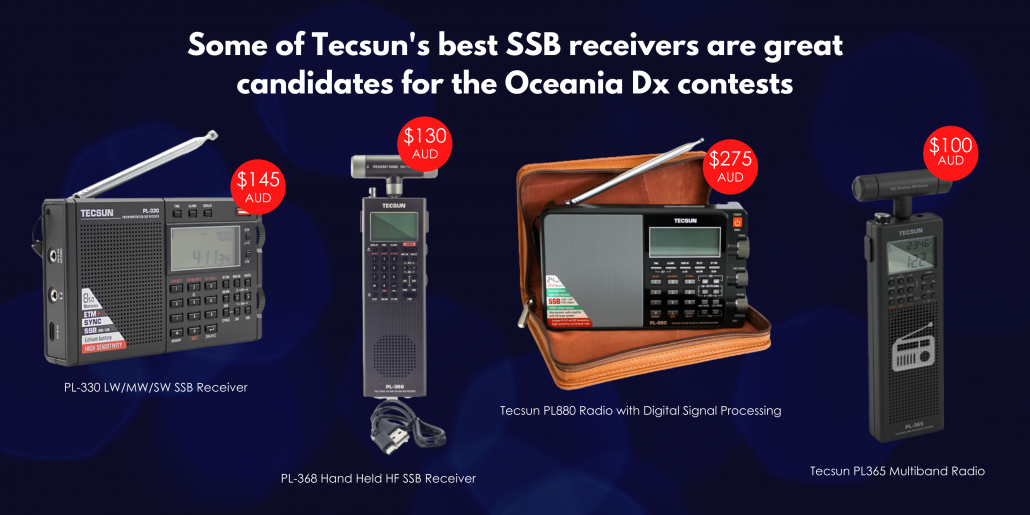
SUBMIT YOUR ENTRY
- The OCDX contests are adjudicated electronically, hence we need your electronic logs.
- If possible, use contest logging software to generate a Cabrillo file, then upload it using the on-line submission form.
- Otherwise please use the online form or some other means to generate a valid plain text column-aligned Cabrillo file, then upload that.Provided you made less than 50 contacts, you can mail in a legible paper log with a summary sheet (see the official rules for details).
- Get your log in before November!
- Every submitted entry will be checked and given a final score as part of the adjudication process … but naturally you are welcome to calculate your claimed score and hope that’s close!
- A veritable profusion of certificates, trophies and plaques will be awarded.
- Please email the Committee at info@oceaniadxcontest.com if you have any problems entering.
- Good luck!
- Click here for the contest rules

We all love to communicate, why not take a trip around the world with radio!! No internet connection or mobile phone signal is needed! Talk to other amateur radio operators across the world, maybe even in unusual places or as far as space!
Yes, that’s right, the international space station carries amateur radio equipment on board and there are always licensed amateurs among the crew who enjoy using it to communicate with operators all over the world. Youtube features several recordings of amateur radio operators communicating with space crew!
What to listen to
You can listen to local radio stations from around Australia, and even the world via shorwave.
HF aircraft channels, weather reports, and amateur radio nets. For those new to listening on the HF bands, nets are an ‘on-the-air’ gathering of amateur radio operators. chatting and passing messages, normally via organised radio nets, on a predetermined frequency at the same time every day.
These nets can range from discussions on areas of interest, to emergency messages or simply as a regular gathering of friends for conversation.
Here are some of the most common radio nets.
DX Nets
DX nets are one of the most fascinating and are often organized to help amateur radio operators make contact with stations in distant locations or regions where amateur radio operators are scarce.
Imagine randomly tuning across amateur bands and being able to listen to another station you may not normally be able to hear, by simply tuning into a DX net.
Club Nets
Amateur radio clubs organise nets between members on a regular basis. The topics are often of special interest and can vary from vintage radio equipment, locating unique stations in Australia and around the world, using and discussing the AM mode of voice transmission and many more.
These nets foster communications members across geographic locations and special interest clubs, and make fascinating listening for shortwave enthusiasts, whilst providing an open communications link for those in isolation.
Traffic Nets.
Traffic nets operate primarily to relay written messages. Both routine and emergency messages have been passed on behalf of others as a public service mission for decades.
Often used for training purposes or during emergencies such as natural disasters when there are power outages traffic nets are used to pass on crucial information to the affected areas. Often relayed by emergency services or ham radio users where possible.
If you are looking to add a shortwave radio to your collection we have a fantastic selection available on our webshop like The Tecsun PL880 Radio
*Info from the Wireless Institute of Australia
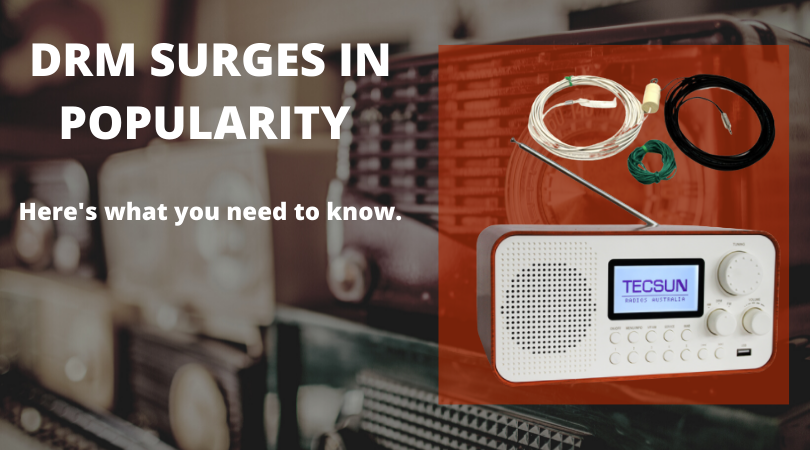
After many years of stagnation, DRM is emerging as a perfect fit for shortwave broadcasters seeking to increase their audience, and at the same time reducing their energy consumption.
DRM is an open source, non proprietary standard for terrestrial broadcasting, promoted by the DRM Consortium, a group of transmission equipment and receiver manufacturers as well as international broadcasters.
Over 30 broadcasters from around the world now carry DRM broadcasts. The latest schedule can be found here: http://www.hfcc.org/drm/
To receive DRM broadcasts a suitable receiver is required. The GR216 receiver, https://www.tecsunradios.com.au/store/product/tecsun-drm-radio/, promoted by Tecsun Radios Australia is a high-performance receiver, both on DRM and analogue shortwave. It is a self-contained unit, with provision for the connection of external antennas for shortwave and FM.
The receiver includes a self contained linear power supply which eliminates interference caused in receivers powered by switch mode power supplies.
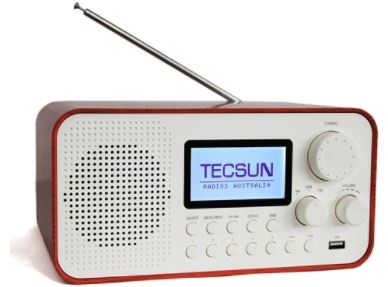
We recommend an external antenna for good DRM reception and our MW/SW Outdoor Antenna https://www.tecsunradios.com.au/store/product/tecsun-shortwave-outdoor-antenna/ is most suitable. This antenna incorporates a 9:1 balun to provide the correct impedance for most shortwave receivers with an external antenna socket.
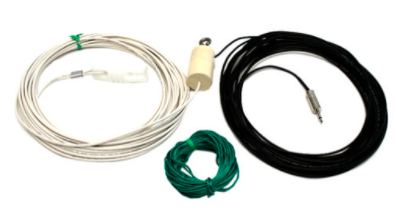
The typical improvement over the same length of wire without the matching components is between 10 and 15dB in signal level.
A word about antennas:
Directional characteristics of random wire and long wire shortwave receiving antennas are dependent upon the antenna length, height above ground, received frequency and directional orientation of the antenna wire. The four elements are interactive.
Generally the antenna should be aimed so that the transmission source is at 90 degrees to the antenna. So if the transmission source is to the West, run the antenna on a North South direction if possible. This works best on antennas that are less than a quarter wavelength in length and mounted a quarter wavelength above the ground (such as the antenna mentioned above).
In the case of a simple longwire without matching, the length of the wire cut for one quarter wavelength at popular DRM frequencies is as follows:
13Mhz: 6 metres in length, 15Mhz: 5 metres in length, 7 Mhz: 10 metres in length
A simple long wire antenna will work better at greater elevation above the ground, ie the higher the better. Multistrand insulated wire will work better and for longer that solid copper wire, which will weaken with repeated movement.
In practical terms, a DRM receiver with an external antenna will be able to hear most current DRM broadcasts from 13-18Mhz. Check the broadcasting schedule for the appropriate times.
Remember that all times are given in GMT and that means AEST (Australian Eastern Standard Time) is 10 hours ahead of GMT. Hence (for example) the BBC Relay from Singapore on 15620Khz will appear between 2pm and 8pm AEST.
One more factor that can influence the success of your reception is the direction in which the signal is being beamed.
This information is also available on the DRM HF schedule site. If you are in the target area you will have a much better chance of sucessfully receiving DRM broadcasts.
Target areas can be seen here: https://www.drm.org/what-can-i-hear/broadcast-schedule-2/
There are many stations that can be received if suitable attention is paid to antenna orientation, and broadcasting schedules, with more stations being added to the schedule every month.
Good Listening !
Tecsun Radios Australia are proud sponsors of the two upcoming field day events.
The CCARC Wyong Field Day “MayHam”2021 on SUNDAY, 30 MAY 2021
And the ORARC 2021 Field Day on Saturday and Sunday the 12th and 13th of June 2021 during the Queens Birthday Long Weekend.
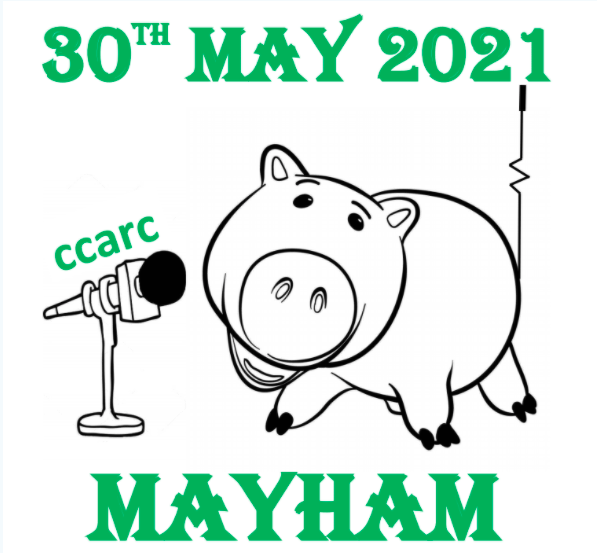
MAYHAM at Wyong will feature car boot sales, new product releases, opportunities to attain or extend or upgrade your radio licenses as well as a fantastic range of lectures on a variety of topics including noise reduction, operational amplifiers, and tube radio.
Tune in while you find a bargain at the car boot sale.

Have you heard about the fox hunt?
Radio direction finding (Fox Hunting) is used to find sources of interference to any form of wireless electronic communications, including broadcast and two-way radio. Amateurs use RDF for a variety of reasons, but more often, they use it just for fun. Hidden transmitter hunting has been done by amateurs for many years. Using ‘hide-and-seek” procedures, amateur radio operators (“Hounds”) take up the task of finding hidden transmitters (the “Fox”). Numerous cunning tricks are played by those hiding a Fox as they seek to elude the Hounds. In Australia, Foxhunting includes travel in a car, and DFing a hidden transmitter on the move, whilst following all current road rules. Then the Hounds, become pedestrians to discover the hiding spot of the transmitter, the “Fox”. Foxhunts can also be held over relatively short courses requiring Hounds to do all of their DFing on foot. Sometimes the”Fox” may be disguised to make the hunt more difficult, so watch out for “Wolves” when you are hunting too. Whatever the case, it is a fun activity!
Fox Hunt Purpose:
- a) Provide practice and enhance skill in radio direction finding for and by radio amateurs.
- b) Promote teamwork within the amateur community.
- c) To help newcomers and old-timers alike in the skills of radio direction finding.
But most of all:
- d) To have fun!
Tecsun Radios Australia is offering free tickets to this event, simply send an email to hello@tecsunradios.com.au with the subject line FREE TICKETS and we will have your name added to the door list.
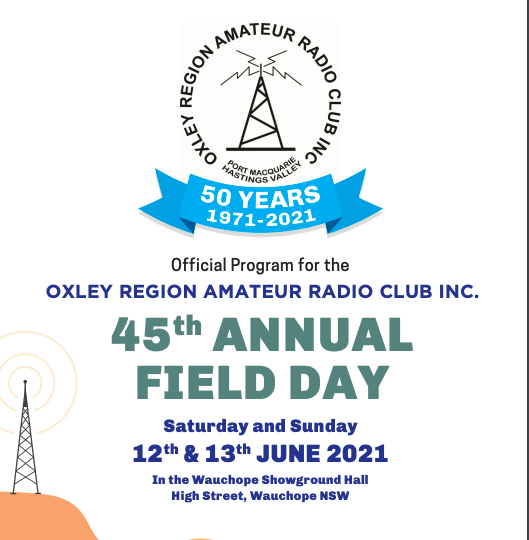
The Oxley Region Amateur Radio Club annual Field Day will be held at the Wauchope Showground hall with all the usual field day activities on Saturday and Sunday the 12th and 13th of June 2021 during the Queen’s Birthday Long Weekend. The Field Day dinner will be held at the Port Macquarie Golf Club on the Saturday night. Mark your calendar now. The Wauchope Showground permits camping so it is possible to stay on site in your own motor home, caravan or tent with power and amenities.
Tecsun Radios Australia have contributed a PL-330 receiver to the ORARC 2021 Field day raffle that will be held during the event.
